The incredible story of Marie Curie - the scientist who introduced the nuclear age
Maria Salomea Sklodowska was born in Warsaw, Poland on Nov. 7, 1867. Here's one of the earliest known photos of her at the age of 16.

The Curie sisters were determined to study despite government bans on higher education for women.
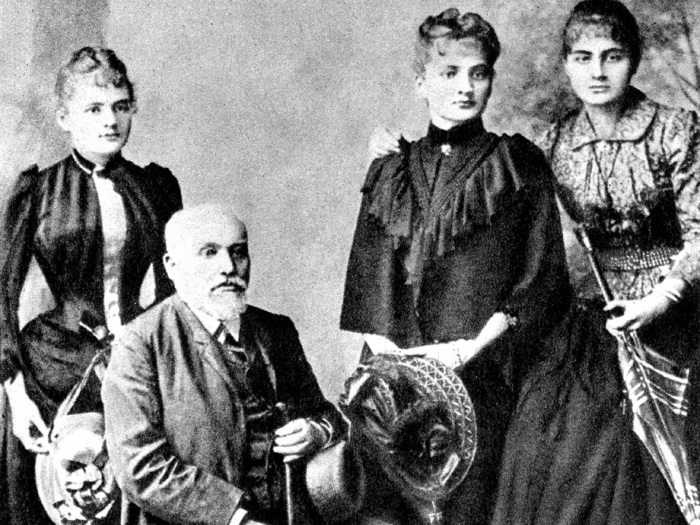
Russia-dominated Poland was in the midst of a feminist revolution, but changes were slow-going.
Since women were still banned from higher education, Curie and one of her sisters joined the Flying University — an educational institution that admitted women— in the mid 1880s.
Source: American Institute of Physics
She eventually moved to Paris in 1891.
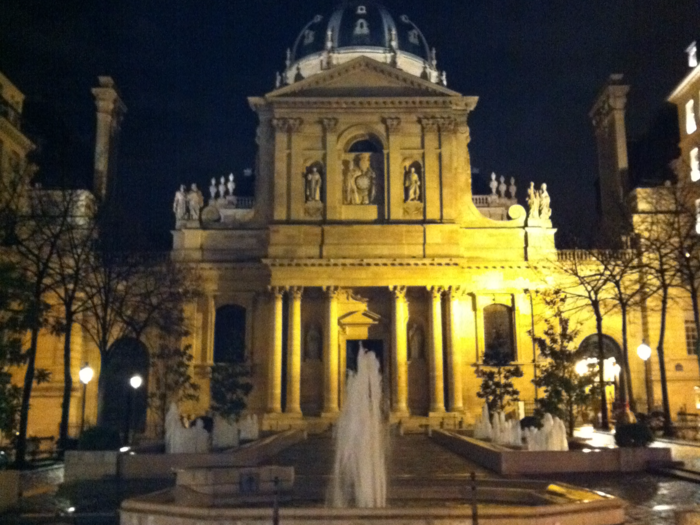
To continue her studies in chemistry, math, and physics, Curie studied at Sorbonne — the University of Paris at the time — where she eventually became head of the Physics Laboratory.
Source: NobelPrize.org
Curie returned to her home country to teach.

After earning two degrees in science from Sorbonne, Curie returned to Poland in 1894 hoping to secure a job as a professor at Kraków University.
However, she was denied because she was a woman.
Source: American Institute of Physics
Soon after, she met the man who would become the love of her life.
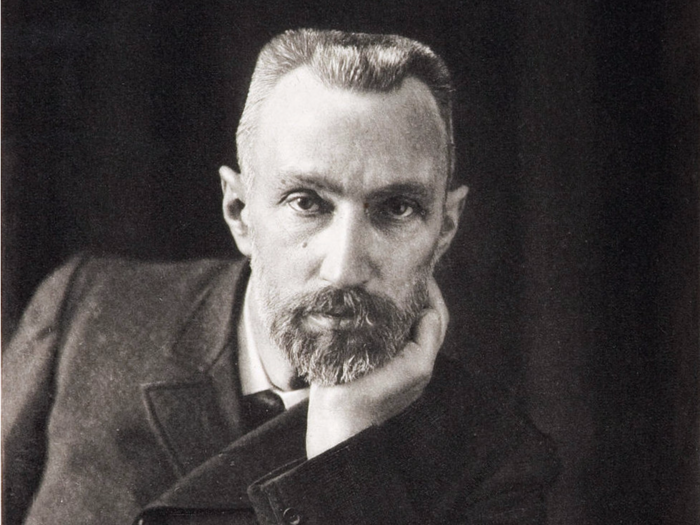
Pierre Curie was a professor at Sorbonne's School of Physics. Marie recorded her first impressions after their meeting:
"He seemed very young to me although he was then age thirty-five. I was struck by the expression of his clear gaze and by a slight appearance of carelessness in his lofty stature. His rather slow, reflective words, his simplicity, and his smile, at once grave and young, inspired confidence. A conversation began between us and became friendly; its object was some questions of science upon which I was happy to ask his opinion."
Source: Encyclopedia
After several proposals, the couple wed in France.
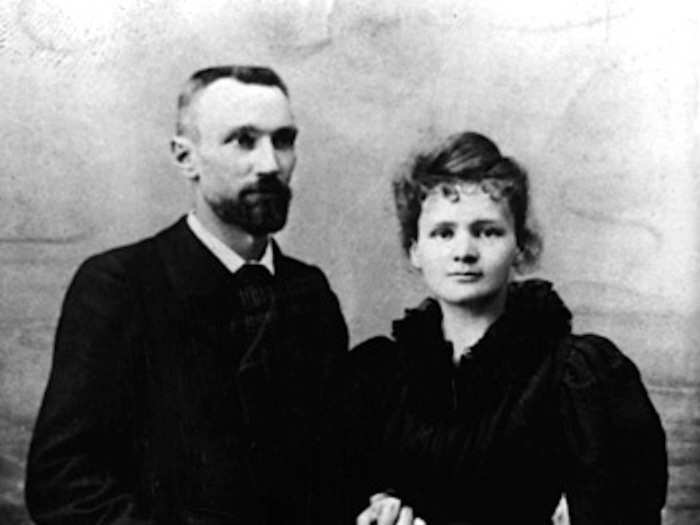
In a simple ceremony on July 26, 1895, Pierre and Marie got married in France. Marie decided to wear a more practical dark blue dress (similar to her laboratory outfits) instead of a bridal gown.
The couple would become terrific scientific collaborators.
Source: American Institute of Physics
Pierre and Marie married in 1895.
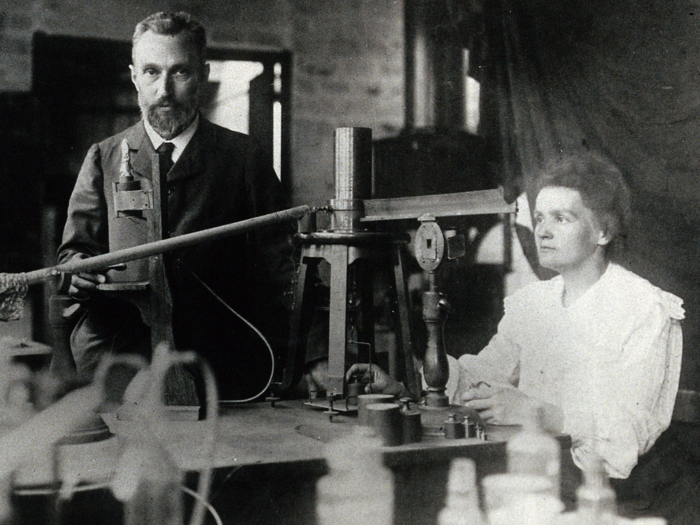
Shortly after their marriage, Marie began investigating the properties of the radioactive element uranium.
Within three years, her work had inspired Pierre to drop his current research efforts and join her.
A choice that undoubtedly advanced the research but that almost eclipsed Marie's brilliance.
Source: American Institute of Physics
In the late 1890s, Marie developed a novel idea that completely revolutionized science.
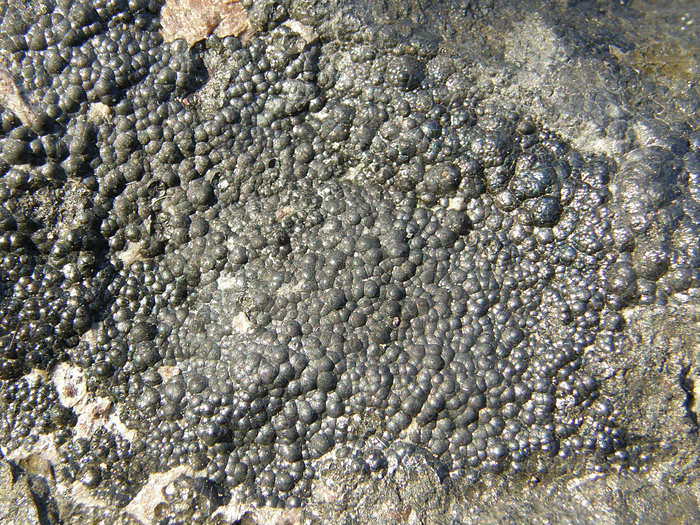
Marie was the first to hypothesize that the bizarre properties of uranium came from the elements' atoms — and not some external force — and therefore must be present in other elements, not just uranium. She soon discovered that thorium had similar properties.
She later coined the term "radioactivity" to describe this elemental behavior.
Source: American Institute of Physics
Following her lead, Maria and Pierre were pushing the envelope of science in no time.
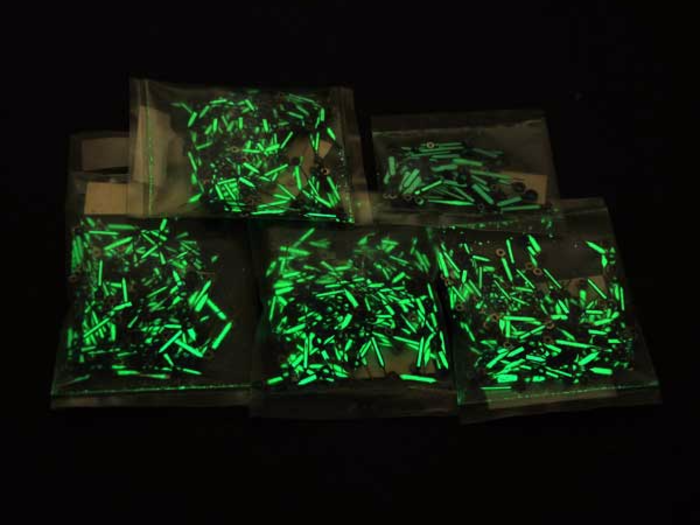
Between 1898 and 1902, Marie and Pierre discovered two, completely new elements: polonium and radium.
They also discovered that, when exposed to radium, tumor-forming cells were destroyed faster than healthy cells.
Today, radiation therapy is a widely-used method for shrinking and killing tumors.
Source: Encyclopedia
In 1903, the Physics Nobel Prize was awarded to Pierre Curie, Marie Curie, and Henri Becquerel.
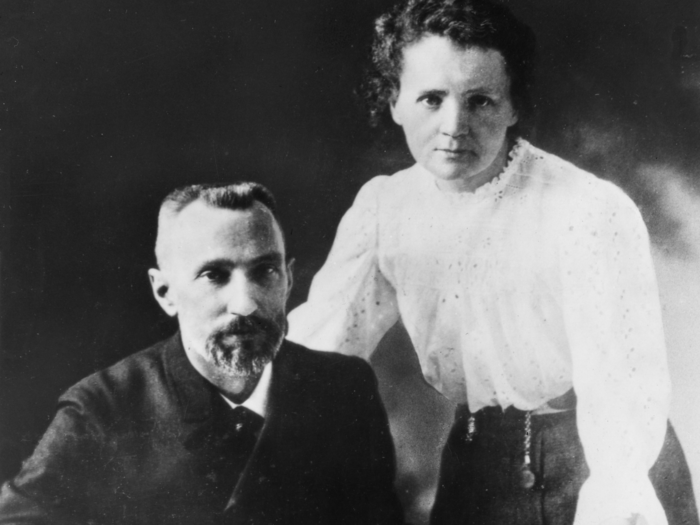
Initially, the Royal Swedish Academy of Sciences were only going to recognize Pierre and Becquerel for the prize. It was only after Pierre learned of this and complained that the academy included Marie.
The prize money was split in half — not into thirds. The Pierre's shared half while the other half went to Becquerel.
Pierre and Marie were awarded "in recognition of the extraordinary services they have rendered by their joint researches on the radiation phenomena discovered by Professor Henri Becquerel.
Source: NobelPrize.org
After becoming the first woman to receive a Nobel, Marie is shamefully overlooked for her genius.
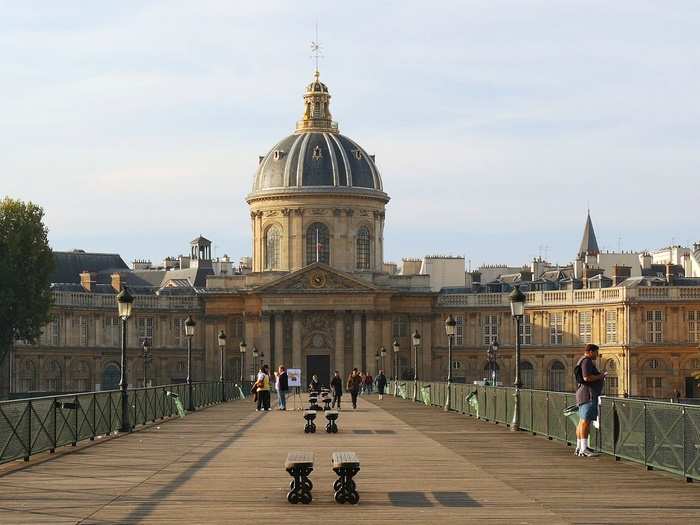
Shortly after the Nobel laureates were announced, the University of Paris created a new chair in physics to which they appointed Pierre.
In 1905, Pierre was elected to the French Academy of Sciences.
Despite her ground-breaking contributions, Marie was overlooked for similar recognition by both the university and the academy.
Source: American Institute of Physics
Again, Marie suffers the sting of sexism in Stockholm.
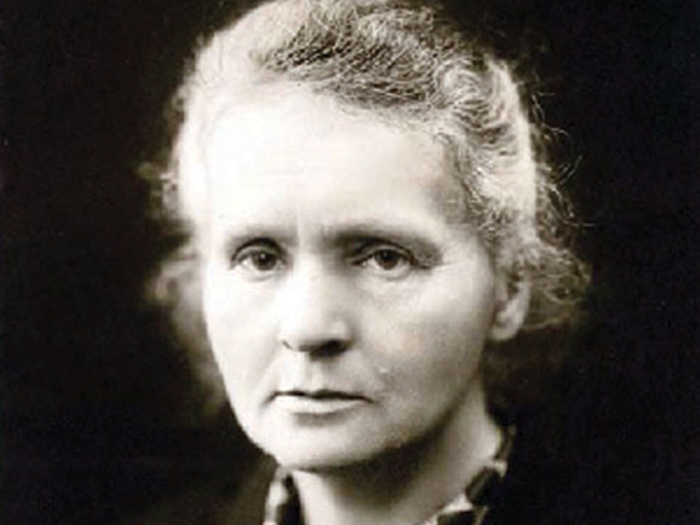
In 1905, the Curies traveled to Stockholm to receive their Nobel Prize winnings — a trip that had been postponed since 1903 because the two were too busy for the trip.
Typically, Nobel laureates provide a lecture on their award-winning work before receiving the money. Because she was a woman, Marie was not allowed to present, so she could only watch as Pierre lectured.
Source: American Institute of Physics
Pierre Curie died unexpectedly in 1906.
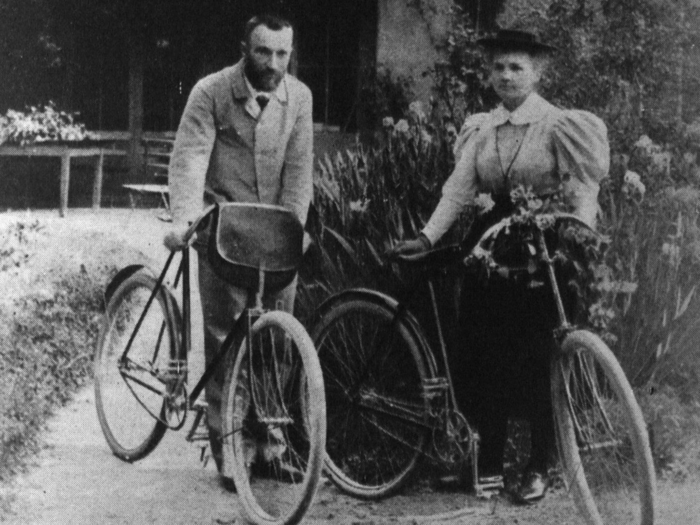
During a rainy night in April, Pierre was struck by a horse-drawn vehicle and killed.
One month later, the University of Paris appointed Marie her husband's position as professor and chair of physics.
She was the first woman to hold the position of professor at the university.
Source: American Institute of Physics
Heart-broken from her husband's death, Marie pushed on.
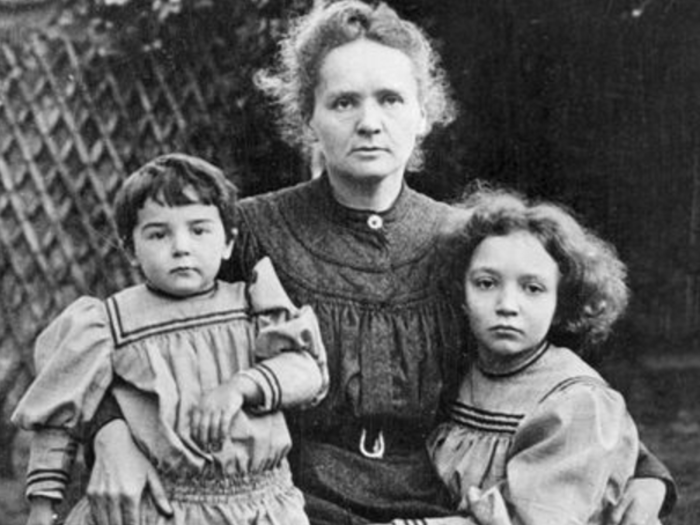
Between 1906 and 1911, Marie juggled mothering her two daughters (with Pierre), teaching the first and only class on radioactivity in the world, editing her late husband's entire collected works, and published a 20th century masterpiece "Traité' de Radioactivité."
Traité' de Radioactivité is regarded as a classic account of early research in radioactivity.
Source: Encyclopedia, Brown University Library
The French Academy of Sciences' sexist superiority denied them a piece of history.
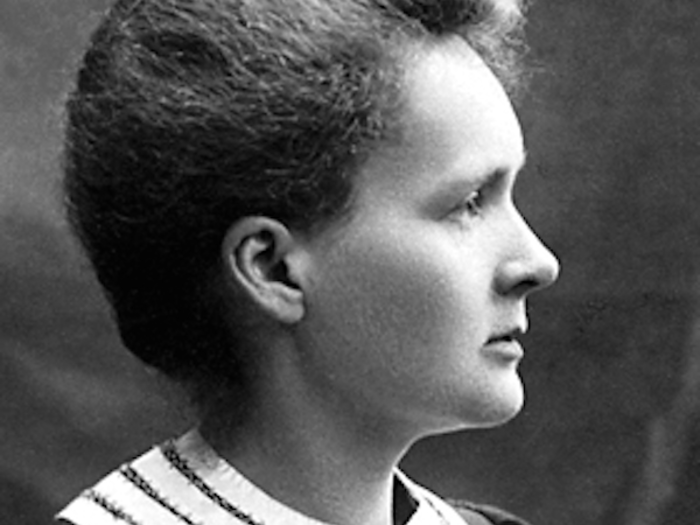
In 1911, Marie Curie was denied membership with the French Academy of Sciences for the second time.
Within a year of rejection, she became the first scientist to win two Nobel Prizes.
The academy did not elect its first female member, Margeurite Perey, until 1962.
Source: Encyclopedia
Marie is awarded the 1911 Nobel Prize in Chemistry.
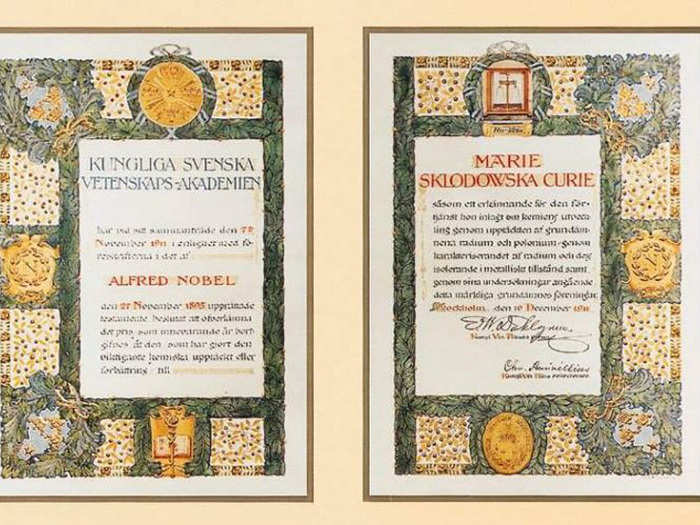
Marie was awarded "in recognition of her services to the advancement of chemistry by the discovery of the elements radium and polonium, by the isolation of radium and the study of the nature and compounds of this remarkable element."
She was the prize's sole awardee that year.
Source: NobelPrize.org
Life began to look up for Marie.
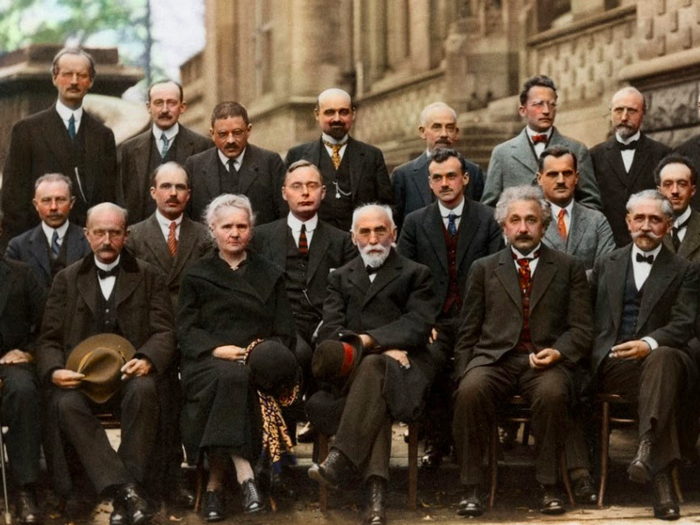
The same year she earned her second Nobel Prize, Marie was also elected as a permanent member of the Solvay Conferences in physics, to which Albert Einstein, Maxwell Planck, and a number of other famous physicists of the day were members.
Source: Solvay Institute
Also, in 1911, Poland erected the Warsaw Institute of Radioactivity in her honor.
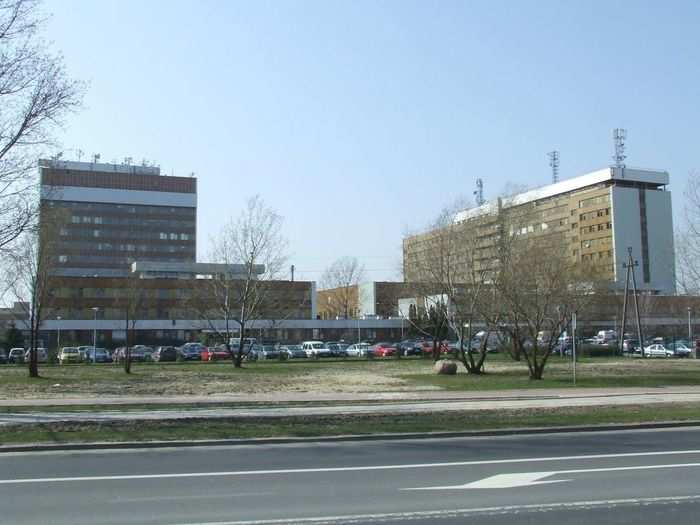
Marie was offered directorship at the institute and was sad to turn the offer down.
She only stayed in France because the University of Paris, in partnership with the Pasteur Institute, agreed to build the Radium Institute, today called the Curie Institute.
Source: American Institute of Physics
When war broke out in 1914, the Radium Institute's work was postponed.
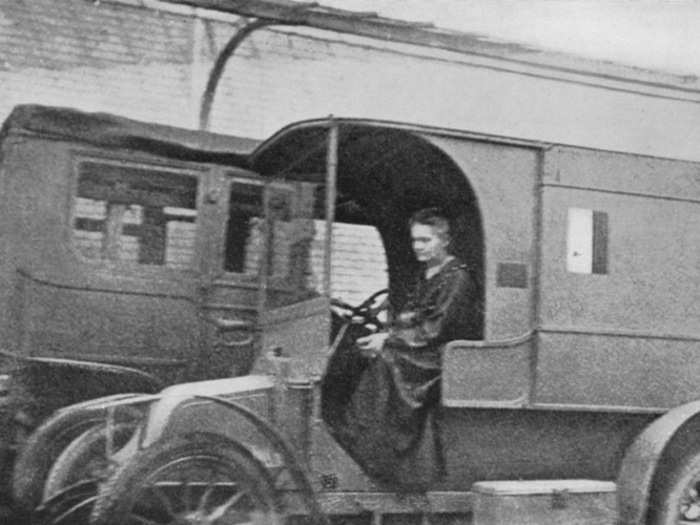
In a letter to French physicist Paul Langevin, Marie wrote: "I am resolved to put all my strength at the service of my adopted country, since I cannot do anything for my unfortunate native ountry just now..."
To assist, Curie developed France's first military radiology center, that used x-rays to help doctors identify bullets, shrapnel, and broken bones in soldiers.
Source: American Institute of Physics
Marie also gave her only source of radium, in the amount of one gram, to the French government, at their request. They never reimbursed her for it.
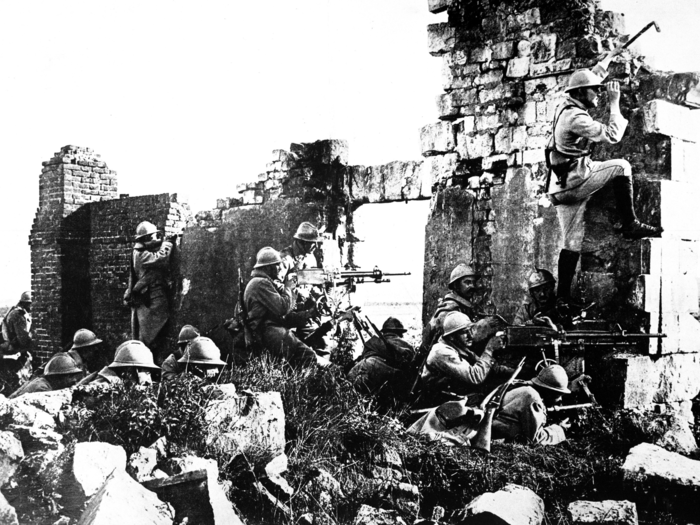
Though Marie had given away all her radium for research and was named the Director of the Red Cross Radiology Service during the war, she was never given any formal recognition by the French government for her services.
Source: American Institute of Physics
While France may not have recognized her efforts, the US did.
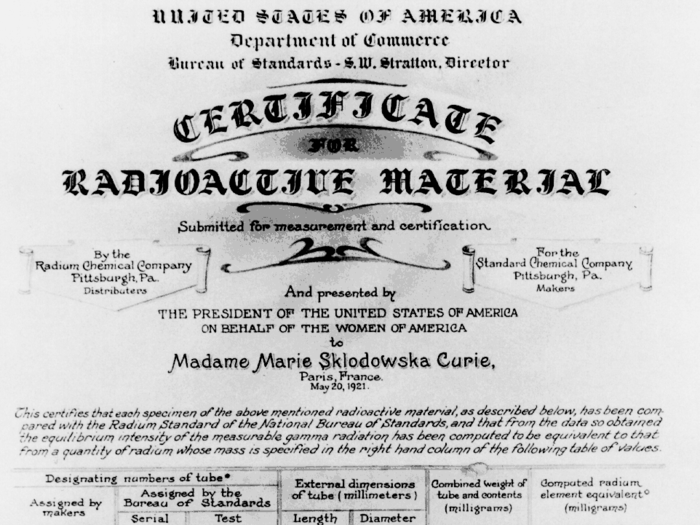
Shortly after war's end, Mrs. William B. Meloney visited the Radium Institute to tell Marie that the US had raised $100,000 to purchase one gram of radium for her institute.
When she and her two daughters visited the US to collect the gift, President Warren G. Harding personally gave her a golden key to the tiny box containing the radium.
Embarrassed that she did not have any official French distinctions to wear in public, the French government offered Marie a Legion of Honour before her meeting with President Harding. She declined their offer.
Source: Encyclopedia
With fame came new and exciting opportunities.
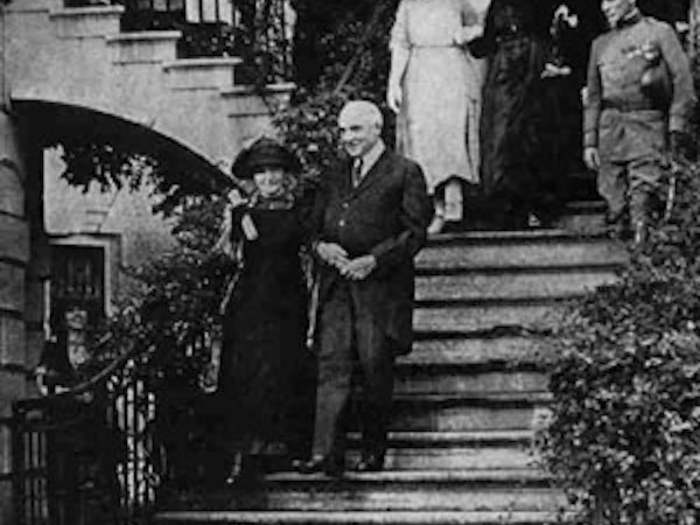
By the 1920s, Marie had achieved global fame. Throughout the decade she traveled to Belgium, Brazil, Spain, and Czechoslovakia giving lectures on her work — a privilege that just two decades earlier she had been denied.
In 1922 she became a fellow of the French Academy of Medicine.
Source: American Institute of Physics
Marie didn't enjoy the attention that came with fame and looked forward to returning to Paris.
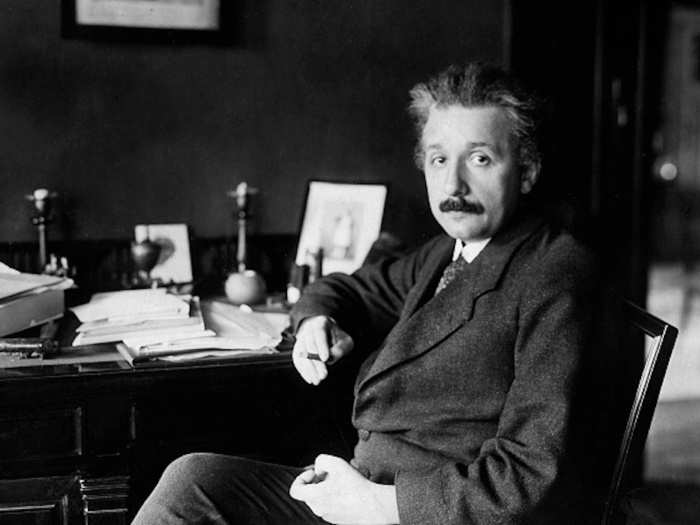
Albert Einstein once remarked: "Marie Curie is, of all celebrated beings, the only one whom fame has not corrupted."
Source: Encyclopedia
It is good to be a Curie.
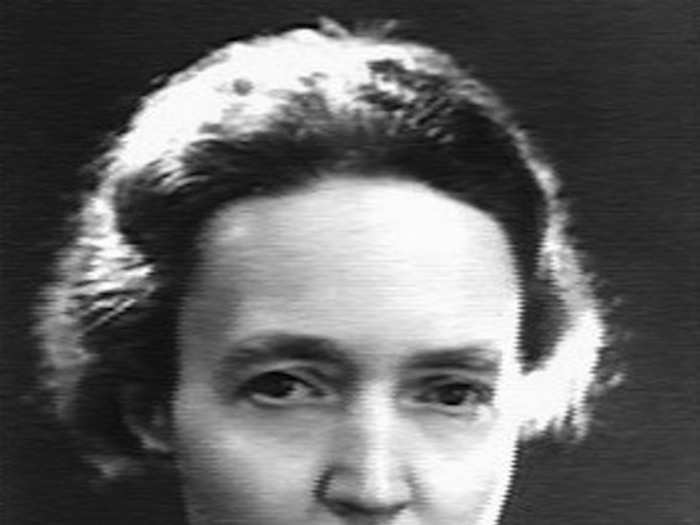
In 1926, Maria saw her eldest daughter Irène married to French physicist Jean Frédéric Joliot-Curie.
The two conducted research at the Radium Institute in Paris, and in 1935 shared the Nobel Prize in chemistry.
Today, the Curie family still holds the record for the most Nobel laureates of any family in history.
Source: American Institute of Physics
Despite years of chronic illness from long-term exposure to deadly radiation, Marie lived to 66.
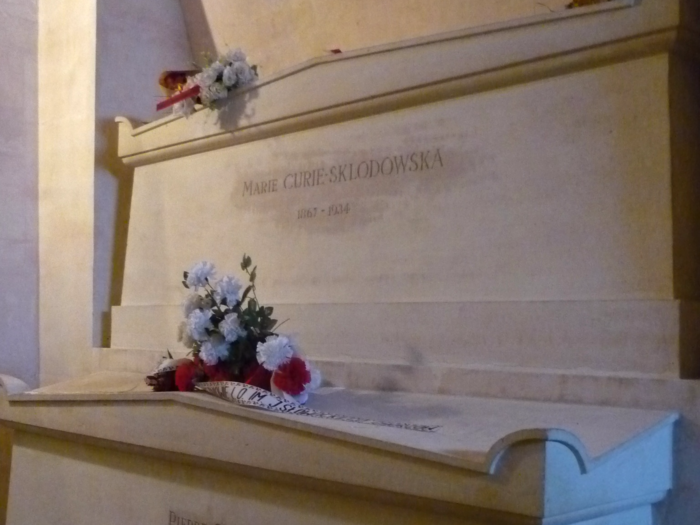
Marie died on July 4, 1934 from aplastic anemia, which is damage of the bone marrow and the blood stem cells within it.
The damage is thought to be the result of Curie's long-term exposure to radiation — a danger that was unknown during her time.
Today, she is buried next to her husband in the Panthéon in Paris.
Source: American Institute of Physics
Marie Curie's legacy lives on in more ways than one.
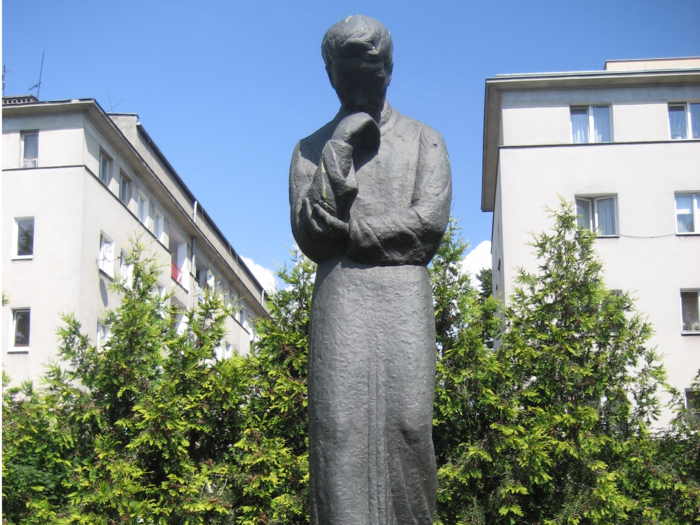
Marie Curie's coveted notes that describe her brilliant investigation into radioactivity a preserved today — stored in lead-lined boxes.
They can only be accessed after you've signed a waiver of liability and put on protective clothing, because just about everything of Marie's — including her notes, furniture, cookbooks — were exposed to the radioactive elements she studied, unprotected, throughout her life.
And they will continue to remain dangerously radioactive for at least another 1600 years.
Source: Christian Science Monitor
Since the first Nobel Prize and Prize in Economic Sciences were awarded, 48 woman and 852 men have been recognized.
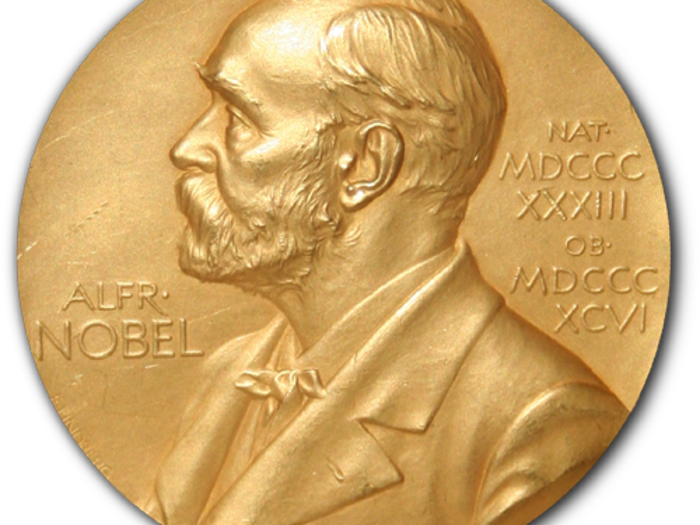
Here's the number of women awarded for each Nobel Prize category:
Nobel Prize in Physics: 2
Nobel Prize in Chemistry: 4
Nobel Prize in Physiology or Medicine: 12
Nobel Prize in Literature: 14
Nobel Piece Prize: 16
The Sveriges Riksbank Prize in Economic Sciences: 1
Source: NobelPrize.org
Popular Right Now
Popular Keywords
Advertisement